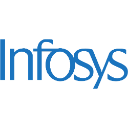
Infosys Limited
$21.57
-0.17 (-0.78%)
Unfortunately there is transcript data available for this earnings call.
Feel free to contact us to request this data.

Unfortunately there is transcript data available for this earnings call.
Feel free to contact us to request this data.